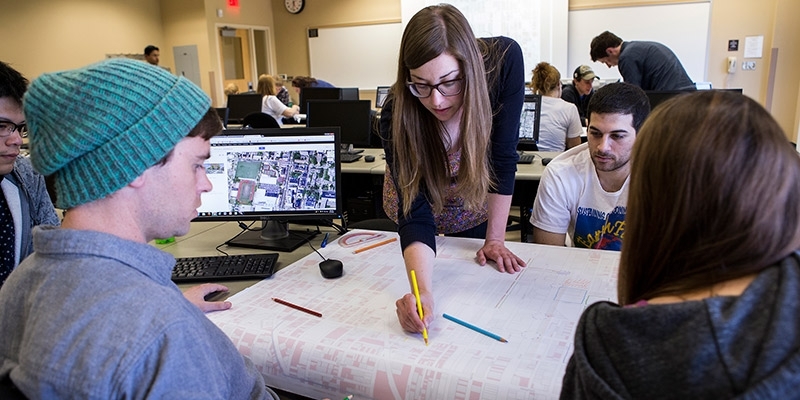Posted January 14, 2016
Division of Architecture and Environmental Design formed in Tyler School of Art
The realignment increases interdisciplinary options that mirror real-world professional work environments.

Joseph V. Labolito
The interdisciplinary Division of Architecture and Environmental Design brings together landscape architecture and horticulture, community and regional planning, architecture and the Center for Sustainable Communities.
There is an essential commonality among Temple University’s departments of Architecture, Community and Regional Planning, and Landscape Architecture and Horticulture, as well as the Center for Sustainable Communities: Through hands-on education and research, each is dedicated to ensuring that built and natural environments work together as a whole.
Recognizing the connections among those units, the Temple University Board of Trustees approved the transition of the Department of Landscape Architecture and Horticulture and the Department of Community and Regional Planning to the Tyler School of Art. They will reside with the Department of Architecture and the Center for Sustainable Communities in the newly formed Division of Architecture and Environmental Design.
“We aim to put Temple and Tyler on par with other highly ranked programs focusing on the built environment,” said Hester Stinnett, TYL ’82, Tyler’s interim dean. “The division provides us with the opportunity to build interdisciplinary graduate programs in sustainability, urban design, and other built and natural environment fields; increase enrollment; and expand the Center for Sustainable Communities’ research base.”
Faculty throughout Tyler are starting to see the potential for new and innovative collaborations.
-- Baldev Lamba, chair of the Department of Landscape Architecture and Horticulture
Combining the expertise, research and resources the departments, Tyler and the new center “can only benefit our students and further strengthen our offerings,” said Vicki Lewis McGarvey, vice provost for University College and acting executive director of Temple’s Ambler Campus.
McGarvey stressed that administratively, the Department of Landscape Architecture and Horticulture, Department of Community and Regional Planning and the Center for Sustainable Communities will remain at Temple University Ambler, while offering programs and courses at Main, Ambler, Center City and Harrisburg campuses.
“Landscape architecture and horticulture and community and regional planning have been crucial parts of our campus history,” she said. “The Division of Architecture and Environmental Design will be just as important for our future.”
Realigning the disciplines into one cohesive unit mirrors what students will experience in the working world, said Kate Wingert-Playdon, associate dean of the Division of Architecture and Environmental Design.
“For our students, whether they are part of an architectural or a planning firm, there is going to be strong collaboration among architects, engineers, landscape architects, planners, horticulturists, designers and fine arts professionals. It educates our students in the way the professional field works today,” she said. “We have the opportunity to build our civic and professional communities in ways we couldn’t [before].”
The new alignment is already bearing fruit, said Baldev Lamba, chair of the Department of Landscape Architecture and Horticulture.
Jesse Harrod, an assistant professor in the Department of Fibers and Material Studies, has reached out to the Department of Landscape Architecture and Horticulture “because she is eager to create a dye garden,” Lamba explained.
“[Harrod] and her students will collaborate with our students and faculty to learn how to grow and propagate the plants, then harvest and process them to use in their art. Faculty throughout Tyler are starting to see the potential for new and innovative collaborations,” he said. “The best part is that we will be able to work as a team of allied professionals to come up with new ideas.”
Related stories:
Related stories:
Temple Contemporary show in ‘New York Times’
Students design tiny house for Temple garden
Acclaimed designer collaborates with Tyler students on graphic map of Philly
Students design tiny house for Temple garden
Acclaimed designer collaborates with Tyler students on graphic map of Philly
—Jim Duffy